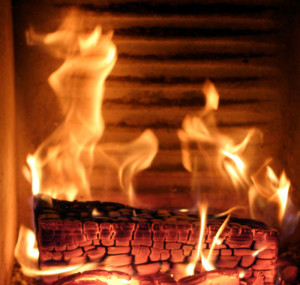Fireplaces and stoves are excellent additions to any home. In addition to keeping you warm, these heating appliances can create a welcoming atmosphere that invites family and friends to sit down, relax, and stay a while.
However, it is important for homeowners to understand how to safely operate their fireplaces. The following fire safety tips can help keep everyone in your family safe around the fireplace.
1. Read the manual
If you have a fireplace insert or stove in your home, it probably came with a manual. Instead of stuffing it into a junk drawer, take the time to read the manual. These instructional guides are a source of valuable information, including operating instructions and safety tips unique to your specific unit. Likewise, if you experience any problems with performance or usage, your manual can serve as a troubleshooting resource.
2. Keep hands – and paws – away
Thousands of children in the United States are injured by accidental fireplace burns each year. In addition to teaching children fire safety, the best way to prevent these types of accidents is by using a fireplace barrier. Decorative screens or glass doors not only keep little hands – and paws – away from the fire, but also serve as a way to keep coals and embers from popping out of the fireplace and onto your floors or furnishings. Likewise, movable barriers such as baby gates can also be used to keep children a safe distance away.
3. Regularly test smoke alarms
If you have a fireplace or other heating appliance in your home (and even if you don’t!) it is absolutely necessary to have working smoke alarms and carbon monoxide detectors. These lifesaving alarms should be placed on every floor of your home, as well as outside sleeping areas. Test the batteries every six months; alarms should be replaced anytime they stop working or at least every 10 years to ensure they are up-to-date with safety and technology standards.
4. Burn the right materials
Fireplaces are only meant to burn the fuel source they are designed for: gas fireplaces should only burn gas and wood fireplaces should only burn wood. While it may be tempting to burn paper products in your fireplace, these fires can be dangerous in two ways. First, paper burns extremely fast which can cause fires to quickly get out of control. Next, many papers and cardboards contain dyes that release toxic chemicals when burned, affecting your home’s air quality. Instead, choose seasoned firewood for your wood burning fireplace.
5. Keep your fireplace and chimney maintained
Fireplace maintenance is an important part of fire safety; if a fireplace or chimney is allowed to fall into a state of disrepair it may not be safe to use. Instead, have your fireplace and chimney swept and inspected annually to make sure it is in good condition and free from the early signs of deterioration.
Following these fire safety tips can allow you and your family to enjoy your fireplace worry-free. For more information on fire safety or to schedule your next chimney sweeping, contact Pristine Sweeps today!
